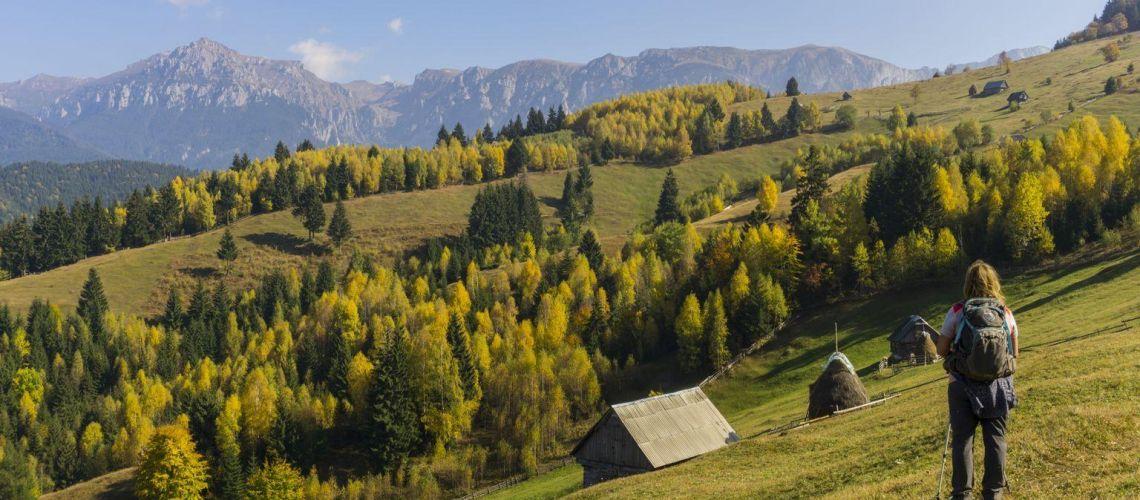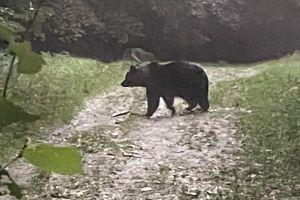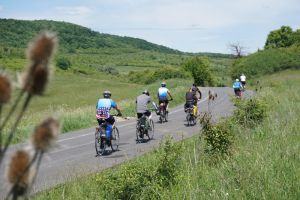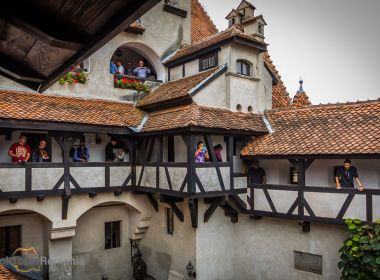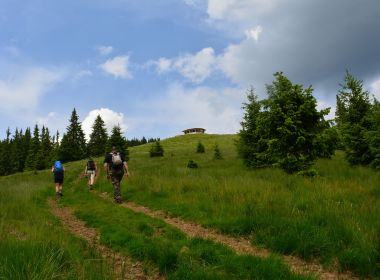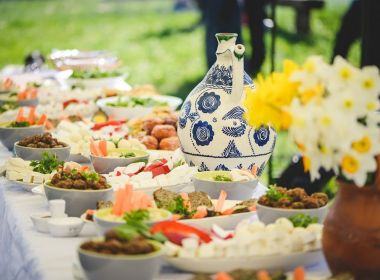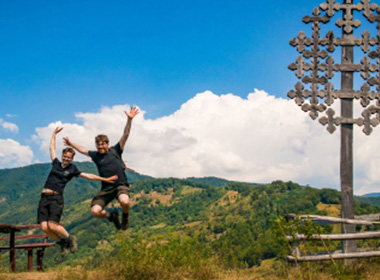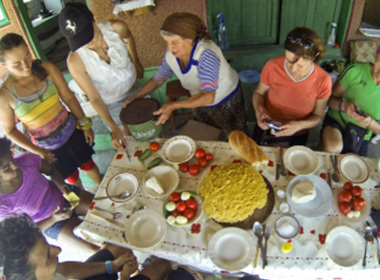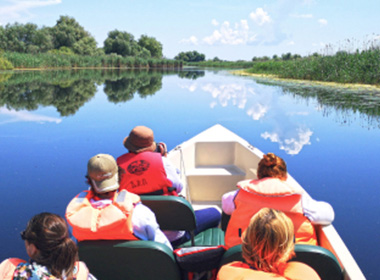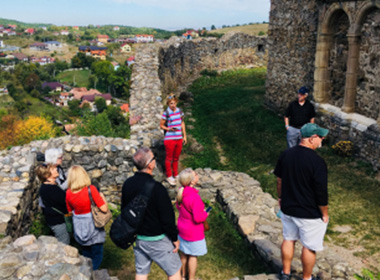Picture this: you’re walking along gentle hills dotted with traditional villages, where your adventure begins each morning with the scent of fresh bread and the sound of church bells echoing across rolling hills. Welcome to Via Transilvanica, Romania’s answer to the Camino de Santiago, a remarkable long distance trail that stretches 870 miles through the heart of Eastern Europe’s best-kept secret.
Via Transilvanica is Romania’s most ambitious social project, designed to breathe new life into rural communities while offering hikers an authentic glimpse into a country where time seems to move at a different pace.
Created by Tășuleasa Social, this trail winds through ten counties and seven distinct cultural regions, from the painted monasteries of Bucovina in the northeast to the multicultural landscapes of Banat in the south west.
Whether you’re planning a single-day adventure or considering the full 69-stage journey, this guide will equip you with everything you need to discover Romania’s hidden treasures on foot.
Table of contents
- What is Via Transilvanica?
- Best time to walk on the Via Transilvanica trail
- Choosing your route length
- Budget considerations and booking timeline
- Essential gear recommendations
- Trail difficulty and what to expect
- Safety and wildlife awareness
- Brown bear safety
- Shepherd dog encounters
- Weather preparedness
- Emergency contacts and trail support
- Cultural highlights along the route
- UNESCO World Heritage sites and medieval citadels
- Fortified churches and saxon heritage
- Stone markers: The world’s largest outdoor art gallery
- Traditional communities and cultural exchanges
- Accommodation and local hospitality
- Types of lodging
- What to expect from Romanian hospitality
- Food and drink experiences
- Farm-to-Table dining in rural villages
- Traditional plum brandy tastings
- Regional culinary specialties
- Local markets and food shopping
- Impact and supporting local communities
- Combating rural depopulation
- Tășuleasa Social’s role
What is Via Transilvanica?
Via Transilvanica represents far more than just another European walking route. This extraordinary trail spans approximately 870 miles (1,400 kilometers) diagonally across Romania, connecting the northeastern monastery town of Putna with Drobeta-Turnu Severin on the country’s southwestern border.
The entire route traverses seven historically and culturally distinct regions: Bucovina, Ținutul de Sus, Terra Siculorum, Terra Saxonum, Terra Dacica, Terra Romana, and Terra Banatica.
What sets this trail apart from other European routes is its dual purpose. While hikers can enjoy spectacular mountain meadows, ancient forests, and limestone cliffs, they’re also participating in a groundbreaking social project aimed at revitalizing Romania’s depopulating rural areas.
Every village you pass through, every guesthouse where you spend the night, and every meal you share with locals directly supports communities that have struggled with economic challenges and population decline.
Perhaps most remarkably, the trail features over 1,400 individually carved andesite stone markers (one for every kilometer) creating what may be the world’s largest outdoor sculpture exhibition. Each marker is unique, designed by different artists, transforming your journey into a constantly evolving art gallery that stretches across an entire country.
Best time to walk on the Via Transilvanica trail
Romania’s continental climate creates distinct seasons that dramatically affect your trail experience. The optimal hiking window spans from late April through October, with each season offering unique advantages.
- Summer (June-August): Warm temperatures ranging from 20-25°C (68-77°F) during the day, perfect for comfortable hiking. However, mountain weather can be unpredictable, and popular sections may feel crowded. Afternoon thunderstorms are common in the Carpathian Mountains, so early morning starts work best.
- Fall (September-October): Daytime temperatures hover around 15-20°C (59-68°F), autumn colors paint the forests in brilliant oranges and reds, and tourist crowds have thinned considerably. You’ll find villages more relaxed, with harvest activities in full swing and locals eager to share stories over homemade plum brandy.
- Spring (April-May): Mild weather and blooming wildflowers, though some higher elevation passes may still have snow patches. This season coincides with traditional egg painting celebrations in many villages, adding cultural richness to your journey.
Choosing your route length
The complete journey requires approximately 69 stages, with daily distances ranging from 9km to 32km depending on terrain and available accommodation. Most stages average around 20 kilometers, a comfortable distance for moderately fit hikers carrying day packs.
- Day hikers can select from hundreds of options, particularly around cultural highlights like Sighișoara or the painted monasteries. These shorter adventures let you sample the trail’s character without major time commitments.
- Week-long adventures work perfectly for covering specific cultural regions. You might focus on Saxon lands between Sighișoara and Sibiu, or explore the painted monastery region of Bucovina.
- Multi-week expeditions allow deeper cultural immersion and the satisfying rhythm of long-distance hiking. Many hikers tackle 2-3 week sections, returning in subsequent years to complete different regions.
Don’t underestimate the time needed to complete the entire trail. It usually takes around three months. To make the most of your time in Romania, contact us and let us know what you’d like to see, and we’ll create a personalised tour for you on Via Transilvanica.
Budget considerations and booking timeline
Planning your Via Transilvanica adventure requires realistic budgeting and advance booking, especially during peak season. Accommodation costs vary significantly based on your choices and the season.
You’ll find plenty of cozy village guesthouses for around €20–40 a night, while renovated Saxon homes and boutique stays are usually €50–80. Meals are great value too, expect €5–15 for a hearty local dish, and many places include breakfast and dinner.
If you’re joining a guided tour, plan to put down a deposit 3–6 months in advance. If you're traveling independently, it’s smart to book your summer accommodation at least 2–3 months ahead.
Essential gear recommendations
Romania’s landscapes are stunning, from rocky mountain trails to muddy village lanes, but they’ll keep you on your toes. Good hiking boots with ankle support are a must, and waterproof ones (or a pair of gaiters) will make spring and autumn hikes much more pleasant.
The weather can shift fast, especially in the Carpathians, so think in layers. Pack a light rain jacket, no matter the season, afternoon storms can roll in out of nowhere and pour hard.
If you’re staying in guesthouses, a 30–40L daypack will easily fit your essentials. Multi-day hikers tackling longer stretches should go for a 50–65L pack to carry clothes and supplies between villages. Trekking poles are worth it too. They’ll save your knees on those long descents.
Trail difficulty and what to expect
The Via Transilvanica keeps things exciting. One day you’re wandering through peaceful valleys, the next you’re climbing rugged Carpathian ridges. It’s a trail that challenges you just enough to stay interesting but still welcomes anyone with moderate fitness and a sense of adventure.
Difficulty varies a lot from place to place and season to season. Gentle village walks are perfect for beginners, while the mountain sections call for stronger legs and a steady head for heights, especially in the Calimani Mountains.
Stages range from easy 9 km strolls between villages to full-day 30 km treks across remote stretches. Most hikers cover 15–20 km a day, enough to enjoy the scenery, snap photos, and chat with locals without feeling rushed.
Elevation gain is what really defines the challenge. Some days you’ll barely notice a 60-meter rise; others you’ll climb over 1,300 meters in a single push. Mountain stages mean steep ascents and descents, so take your time and rest often.
Expect the landscape to change constantly. Northern sections wind through dense beech and fir forests, with roots and mud after rain keeping things interesting. Open meadows make for easier walking but can turn boggy when wet. And as you pass through just one small village, you’ll walk everything from paved roads to farm tracks
- Local tip: Bring a pair of lightweight camp shoes, so tired feet can get a break after long days on the trail (and they come in handy when crossing streams or walking around villages).
Safety and wildlife awareness
Romania’s wild landscapes support some of Europe’s most impressive wildlife populations, making safety awareness essential for an enjoyable trail experience. Understanding potential encounters and proper protocols keeps you safe while appreciating the country’s remarkable biodiversity.
Brown bear safety
Romania is home to around 6,000 brown bears, the largest population in Europe. Encounters are rare, as bears usually avoid people, but a few simple precautions keep everyone safe.
They’re most active at dawn and dusk, so avoid hiking alone then. In dense forest, chat, sing, or clap now and then. Noise gives bears time to move away. Also, store food and anything scented (like toothpaste or soap) securely.
If you meet a bear, stay calm. Don’t run. Back away slowly while speaking softly and raise your arms to look larger. Most bears will leave once they know you’re human.
- Local tip: Many hikers carry a small bell or whistle. It’s an easy way to let wildlife know you’re coming.

Shepherd dog encounters
Romania’s hills and meadows are home to hardworking shepherd dogs guarding their flocks. These big, loyal protectors take their job seriously and might approach hikers who get too close.
You’ll usually hear them first: loud barks that say, “This is my territory.” If that happens, look for an alternate route and give the flock plenty of space.
If dogs do come near, don’t run. Stand tall, speak calmly but firmly, and back away slowly. A walking stick can help set boundaries if they get too bold. Most calm down once they see you’re not a threat.
Shepherds are often nearby and can call their dogs off, so a friendly wave or greeting goes a long way.
Weather preparedness
Weather in the Carpathians can change fast, so staying alert and prepared is key. Summer afternoons often bring sudden thunderstorms, with heavy rain, lightning, and even hail on exposed ridges.
Start early on mountain days to finish exposed sections before storms roll in. Keep an eye on forecasts, but remember local conditions can differ, and watch clouds and wind for warning signs.
Temperatures can swing more than 15°C (27°F) between valleys and peaks, especially in spring and fall. Layering is essential, and even in summer, wet, cold conditions can lead to hypothermia if you’re unprepared.
Snow can linger on high passes until May and return as early as October, so check conditions and have lower-elevation alternatives ready.
Emergency contacts and trail support
In Romania, dial 112 for emergencies. It works on any mobile, even without local service. However, cell coverage remains spotty in remote mountain areas, making prevention and preparation your primary safety tools.
Trails are marked with paint and signs, but GPS and offline maps are lifesavers when visibility is poor or paths get confusing.
Village guesthouses often double as informal support points. Hosts can share local conditions, weather updates, and even help contact emergency services. Friendly relationships with locals not only boost safety but also enrich your trip.
Consider carrying a basic first aid kit for minor injuries.
Cultural highlights along the route
Via Transilvanica transforms hiking into cultural education, passing through communities where centuries-old traditions persist alongside stunning architectural treasures. Each region offers distinct experiences that illuminate Romania’s complex, multicultural heritage.
UNESCO World Heritage sites and medieval citadels
The northern trail passes some of Europe’s most stunning religious art: Bucovina’s painted monasteries. These UNESCO sites, like Sucevița and Moldovița, boast detailed frescoes that have survived centuries of weather, depicting everything from biblical scenes to historic battles.

Tour of Transylvania's Countryside: Sighisoara Citadel & Fortified Villages
Start from: Cluj-Napoca
These monasteries are still active communities, keeping Orthodox traditions alive. Visiting during morning or evening prayers offers a glimpse into centuries-old spiritual life. Photography rules vary, so always ask before snapping pictures.
Sighișoara, one of Europe’s best-preserved medieval towns, is another UNESCO gem. Wander cobblestone streets past colorful merchant houses and defensive towers. Don’t miss the Clock Tower and the hilltop Church on the Hill for history and sweeping valley views.
Local tip: Try arriving early in the morning at monasteries or Sighișoara. You’ll enjoy the sights before the crowds and often catch monks or locals going about their daily routines
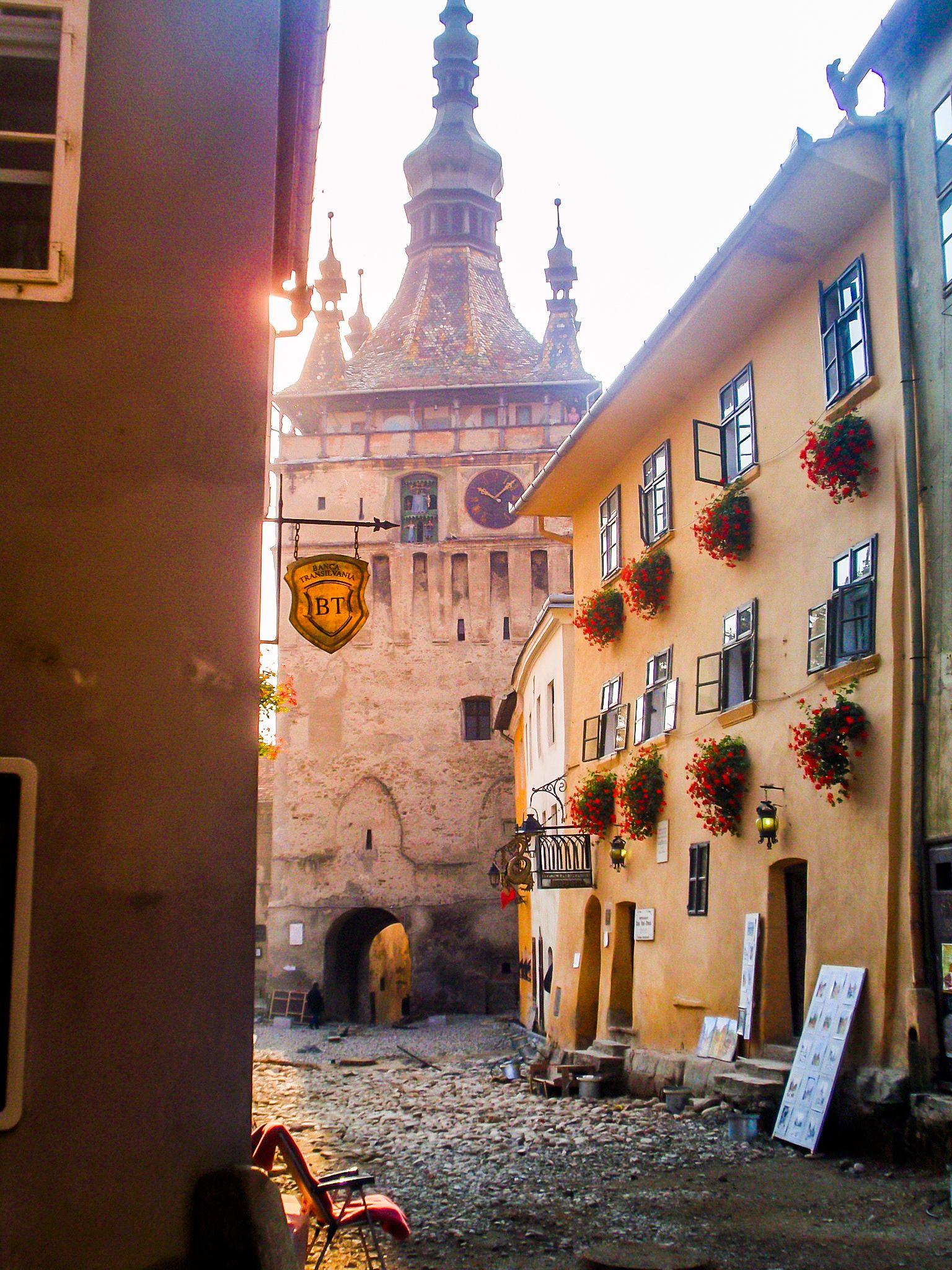
Fortified churches and saxon heritage
Terra Saxonum showcases the unique fortified churches of Transylvanian Saxons, built to protect villagers during medieval conflicts. These massive stone structures combined worship spaces with defensive towers and storage areas, allowing entire communities to seek refuge.
Biertan, Viscri, and Prejmer are standout examples, telling the story of German settlers who shaped Transylvania for centuries. Many villages are now quiet due to post-communist emigration, making visits especially meaningful for locals who remain.
Local guides can share personal stories that bring these centuries-old communities to life.
Stone markers: The world’s largest outdoor art gallery
One of Via Transilvanica’s most unique features is its art project: over 1,400 individually carved andesite markers, placed every kilometer along the trail. Each stone is different, turning the route into a massive outdoor sculpture gallery.
These markers help with navigation while celebrating local culture and folklore. Northern stones feature Orthodox and Hutsul motifs, while Saxon areas showcase Germanic and medieval designs.
The project is ongoing, so spotting and photographing markers becomes a fun “treasure hunt” that tracks your journey and supports contemporary Romanian artists.
Traditional communities and cultural exchanges
Via Transilvanica winds through villages where traditional ways of life continue with minimal modern influence. In northern regions, Hutsul communities preserve wooden architecture, traditional dress for special occasions, and centuries-old farming practices.
In Terra Siculorum, Székely Hungarian communities maintain their language, cuisine, and cultural traditions, with festivals, folk music, and storytelling offering a vivid glimpse into Central Europe’s rich heritage.
Roma communities across Romania add their own crafts, music, and traditions to the cultural tapestry. Sharing a meal or conversation with locals is a wonderful way to learn directly from them.
Many villages still practice traditional crafts like pottery, weaving, and wood carving. Some offer workshops where hikers can try their hand at these techniques while supporting local artisans.
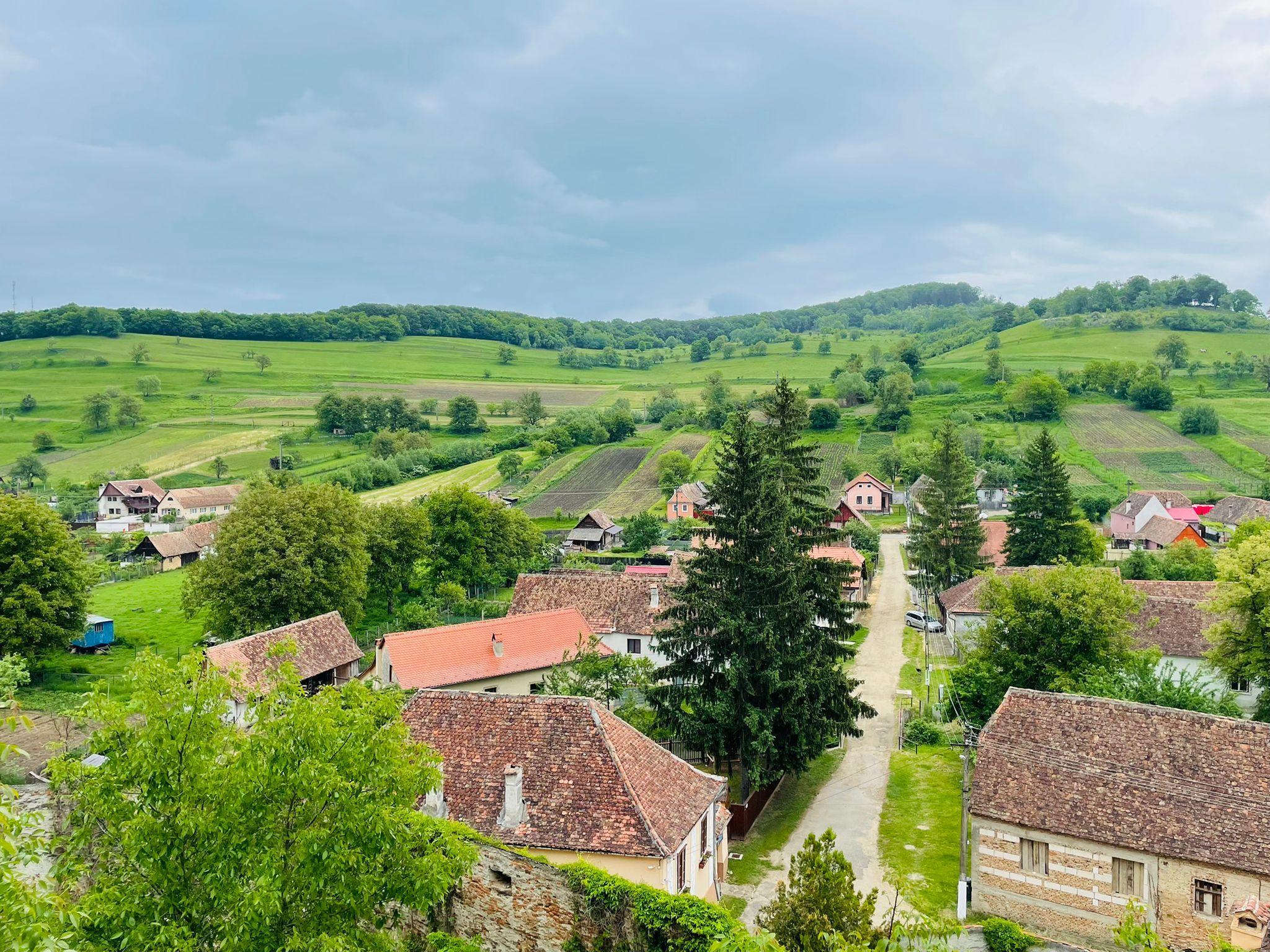
Accommodation and local hospitality
Staying in village accommodations transforms Via Transilvanica from a simple hiking experience into deep cultural immersion. Romania’s tradition of hospitality, combined with the trail’s rural focus, creates opportunities for authentic connections that many travelers find more memorable than the hiking itself.
Types of lodging
You have different options to choose from:
- Village guesthouses: The most common places to stay along the trail. Offer warm Romanian hospitality, simple but comfortable rooms, shared bathrooms, and communal meals where travelers can mingle.
- Renovated Saxon homes: Many were once medieval family houses and now serve as guesthouses, keeping features like painted walls, ceramic stoves, and traditional furniture alongside modern comforts. You'll find them in Transylvanian villages.
- Hotels: Provide private bathrooms, consistent amenities, and sometimes restaurants. Less intimate than village stays, but convenient bases for day hikes.
- Monasteries: Occasionally welcome overnight guests, especially near Bucovina’s painted monasteries. These stays offer a quiet, spiritual experience, though visitors should respect schedules, dress codes, and local customs.
What to expect from Romanian hospitality
Romanian rural hospitality has deep roots. Welcoming travelers was once a matter of survival. Today, hosts see hikers as guests and cultural exchange, taking pride in sharing their communities.
Breakfast often includes fresh bread, local cheeses, eggs from backyard chickens, and homemade jams or honey. Coffee is central, and you might enjoy a morning cup while chatting about the day’s route or local life.
Evening meals are social affairs, featuring seasonal ingredients, regional specialties, and sometimes local wines or plum brandy. Stories and conversation often matter as much as the food.
Don’t be surprised if your hosts go the extra mile, pointing out hidden cultural sites, introducing neighbors with tales to share, or inviting you to try traditional activities like bread baking or cheese making.
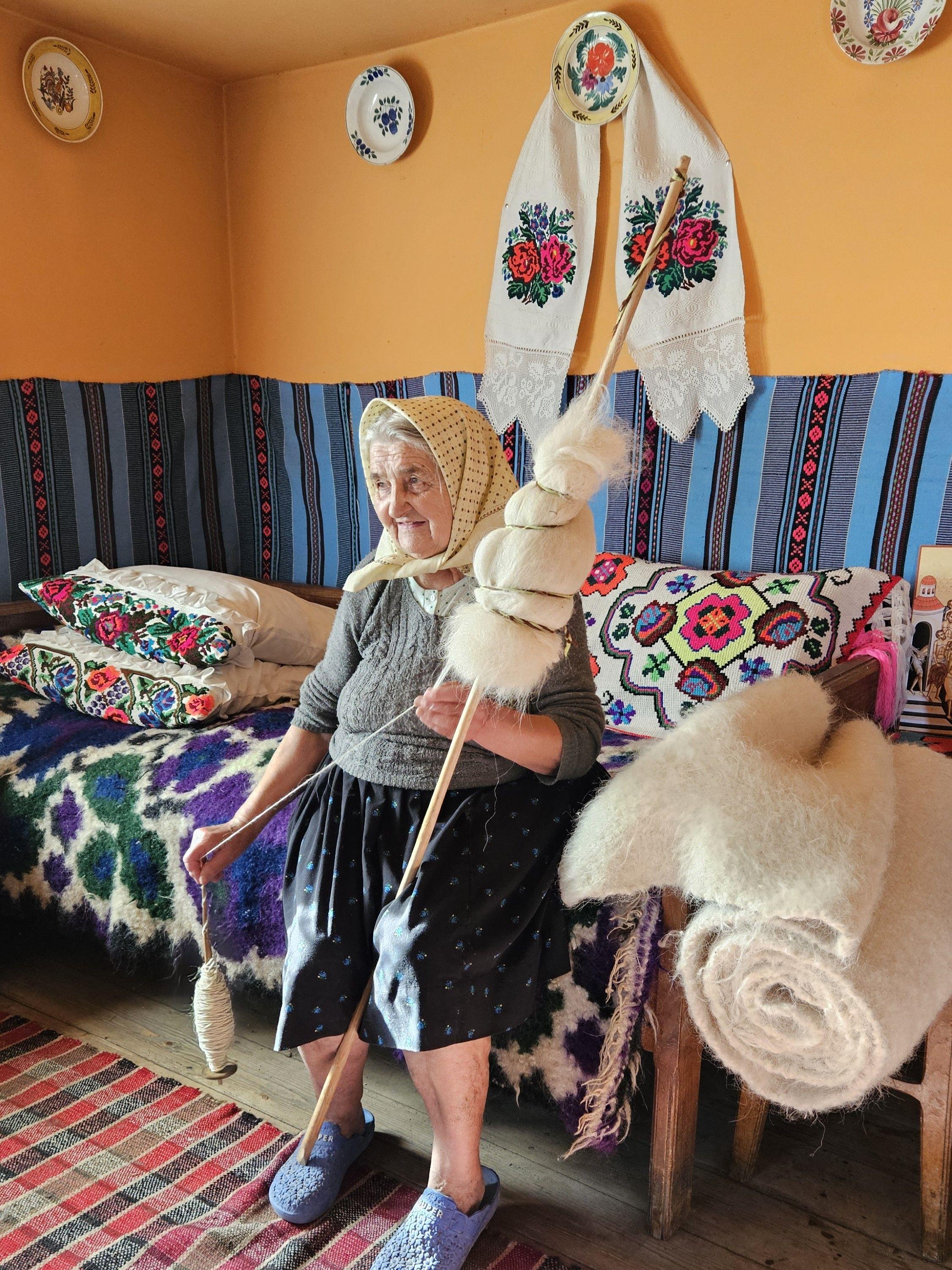
Food and drink experiences
Romanian cuisine along Via Transilvanica reflects the country’s position at the crossroads of Central Europe, the Balkans, and Eastern Europe. Each region offers distinct culinary traditions, while village accommodations emphasize farm-to-table dining that connects you directly with local agricultural traditions. Food is also one of the things Romania is known for.
Farm-to-Table dining in rural villages
Village guesthouses take pride in meals made from fresh, local ingredients, often from their own gardens or nearby farms. Breakfast might include eggs from backyard chickens, fresh bread baked that morning, local cheeses, honey, and seasonal fruit preserves, all accompanied by rich Turkish or Romanian coffee.
Dinners start with hearty soups like ciorbă de legume (vegetable) or, for the adventurous, ciorbă de burtă (tripe). Main dishes feature grilled meats, especially mici (grilled meat rolls), or local pork and beef seasoned with herbs from the garden.
Vegetarian options reflect traditional peasant cuisine, with dishes like mămăligă (polenta) with cheese and sour cream or stuffed cabbage rolls filled with rice and vegetables. Simple, satisfying, and deeply flavorful.

Traditional plum brandy tastings
No visit to rural Romania is complete without trying țuică or pălincă, traditional plum brandies made in nearly every household. Family recipes, passed down for generations, give each batch its own unique flavor.
Țuică is milder, around 25–30% alcohol, while pălincă packs 40–70%, offering a bold, warming taste. Both are served as gestures of friendship and respect.
Sip slowly, enjoy the aroma, and appreciate your host’s craftsmanship. Many conversations begin and end over a shared glass, building connections that transcend language
Regional culinary specialties
Romania’s culinary landscape is as diverse as its regions, shaped by centuries of cultural influences, local ingredients, and traditional techniques.
Northern Bucovina offers hearty mountain dishes influenced by Ukrainian and Polish traditions. Think borș (sour soup), sarmale (stuffed cabbage), mushroom dishes, and rich sheep cheeses from local pastures.
In Terra Siculorum, Hungarian flavors shine with paprika-spiced dishes, goulash, sausages, and sweet treats like kürtőskalács (chimney cake), often paired with traditional wines.
Saxon regions showcase Germanic culinary heritage through sausages, sauerkraut, and pastries. Even after many Saxons emigrated, locals continue these traditions, sometimes blending them with Romanian flavors.
Southwest in Terra Banatica, Balkan influences appear in spicier dishes, diverse grilling styles, and fusion cuisine reflecting centuries of Serbian, Hungarian, and Romanian cohabitation.
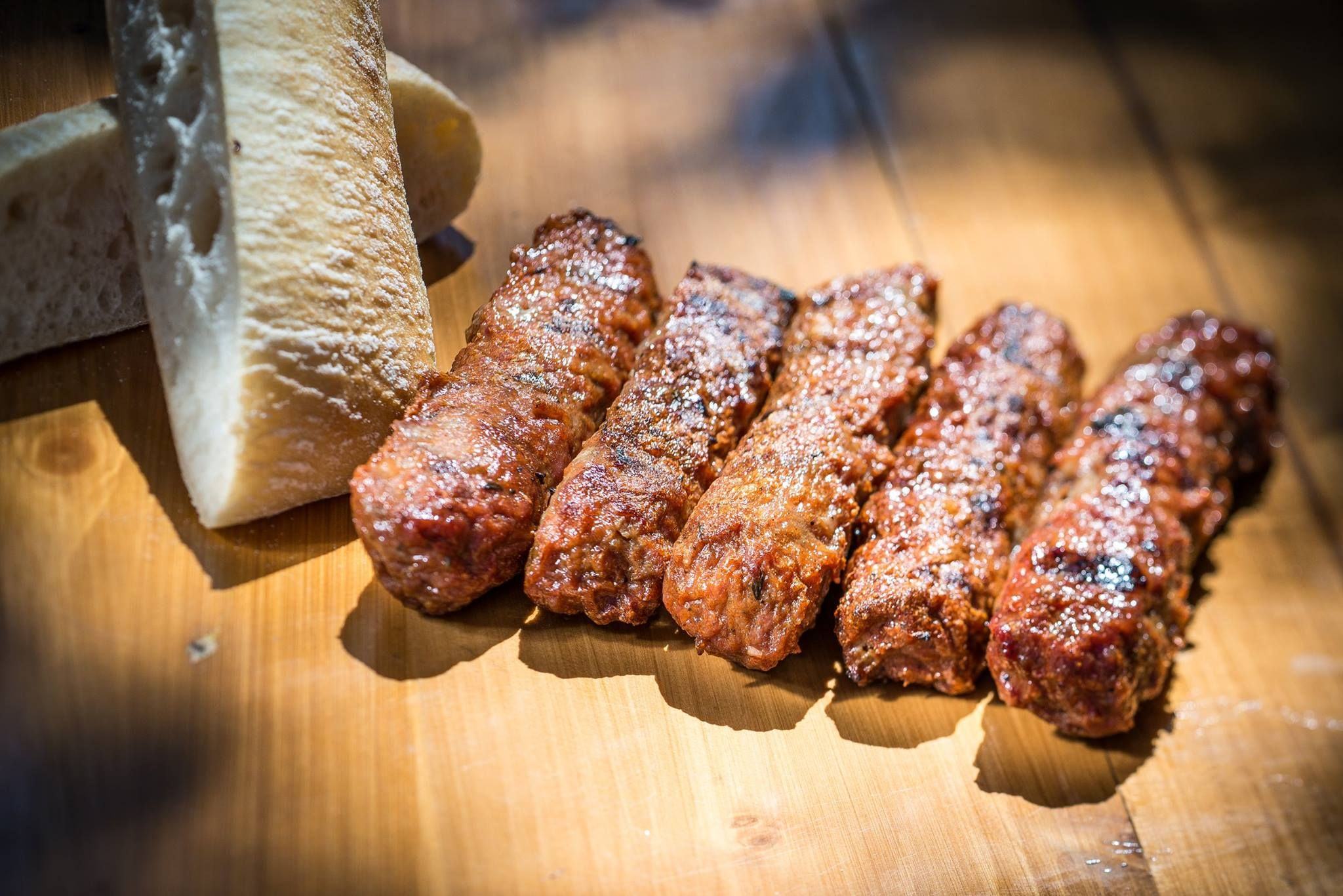
Local markets and food shopping
Village markets, usually held weekly in central squares, are perfect for tasting local flavors, meeting producers, and seeing community life in action. Days vary by village and region, so check schedules in advance.
Seasonal products reflect the agricultural calendar: spring brings fresh herbs and early vegetables, summer offers abundant fruits, fall showcases apples, plums, and preserves, while winter focuses on stored grains, meats, and cheeses.
Artisanal treats include handmade cheeses, traditional sausages, honey from local flowers, and preserved vegetables.

Impact and supporting local communities
Via Transilvanica represents more than recreational infrastructure, it’s a carefully designed social intervention aimed at addressing rural depopulation while preserving Romania’s cultural heritage. Understanding this mission enhances your trail experience while ensuring your visit contributes positively to communities that need economic support.
Combating rural depopulation
Many Romanian villages face population decline as young people move to cities or abroad, leaving aging communities and traditional ways of life at risk. Since 1989, some villages along the trail have lost up to half their residents.
Via Transilvanica helps by directing hikers to these often-overlooked villages. Staying in guesthouses, sharing meals, and buying local products injects much-needed income and shows the value of rural heritage.
The trail’s popularity is even encouraging some young people to return, start tourism businesses, and invest in infrastructure, giving villages a new lease on life. Communities with established guesthouses report stabilized populations and growing opportunities.
Tășuleasa Social’s role
Tășuleasa Social, the NGO behind Via Transilvanica, brings over 25 years of experience in community development and environmental conservation. Their approach focuses on partnering with local communities rather than imposing tourism from the outside.
The organization works with villagers to identify tourism opportunities, provide hospitality training, and connect communities with visitors. Local contractors build and maintain the trail, and regional artists create the kilometer stones, spreading economic benefits throughout the area.
Cultural programs support artisans, preserve traditional skills, and encourage intergenerational knowledge transfer, ensuring tourism strengthens, rather than replaces, local traditions.
---
The success of Via Transilvanica as a model for rural development depends on visitor behavior that supports rather than exploits local communities.
By understanding the trail’s social mission and making conscious choices that support local economies, you become part of a larger movement that’s helping preserve Romania’s rural heritage while creating sustainable economic opportunities for future generations.
Whether you walk for a single day or complete the entire route, you’ll leave Romania with unforgettable memories and the satisfaction of knowing your journey contributed to preserving rural communities for generations of future travelers to discover and enjoy.
